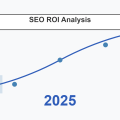In recent times, Google has made a number of announcements about mobile-first indexing. It had planned to roll out mobile-first indexing for the entire worldwide web in September 2020 but at the time of writing that has now been postponed until March 2021.
No doubt, it brought a collective sigh of relief for those who have no idea what mobile indexing is and, therefore, no clue how to prepare for it. The other group who may be relieved are those who knew what to do but hadn’t bothered to take any action yet.
In truth, mobile-first indexing is nothing to be alarmed about, although if you have no idea what it is, it might serve us well if we explain it to you.
Why Is Mobile-First Indexing Happening?
As a business owner, It can’t have escaped your notice that more and more of your customers are interacting with your online properties via their mobile devices. By properties, we mean not just your website but your social media pages as well.
It has also not escaped Google’s notice either, but for them, the trend is not just with regards to people going online via their mobile devices, but them also searching whilst on their mobile devices too.
This has developed to the point whereby we have crossed the point there are now more searches carried out on Google via mobile devices than there are via desktop computers or laptops.
As such Google has determined that it needs to change how it presents search results to take account of this, and that change is called mobile-first indexing.
What Does ‘Mobile-Friendly Website’ Mean?
Now that we explained why mobile-first indexing is happening, we should explain exactly what being mobile-friendly is as it applies to a website.
Over the past few years, as mobile use, as increased exponentially, Google has been encouraging website owners, via their ranking algorithms, to make their websites mobile-friendly.
For many websites, this was a simple process as the themes they were built around were mobile-friendly in the first place. For others, and in particular older websites, it meant a significant update.
For those visiting mobile-friendly websites on their mobile device, it meant the website appeared normal on their display, in proper proportion, and the visitor could also navigate and use the website.
If a website is not mobile-friendly, and you were to visit it on a mobile device, it may not appear properly on the display, the text could be too small or too large, and basically, it would be a very poor experience.
For this reason, and as far as Google is concerned, a website being mobile-friendly becomes a positive ranking factor and being non-mobile-friendly means a negative, with regards to ranking.
This has been common knowledge online for some time, and yet there are still between 20% and 25% of websites whose owners have not made the switch. As a result, their rankings are suffering, and undoubtedly the conversions on their websites are down due to those visiting them on mobile devices having difficulty viewing and using the site.
And it is going to get worse for those websites because come March 2021, the way in Google presents its search results is going to change. It is moving to mobile-first indexing, and if you move on to the next section, we’ll explain what that is, and what it means for website owners.
Mobile-First Indexing Explained
Whenever someone types a search into Google, the results appear almost instantaneously. The websites that appear in those results are in the ranking order that Google’s algorithms have determined most meet what the person searching was looking for.
There is a multitude of ranking factors that Google’s algorithms assess when making their calculations, and many of those factors are based on the content on your website.
In the ‘dark ages’, before mobile devices had internet capability, there was only ever one version of a website’s content that Google would index, and that was the desktop version.
That is no longer the case, because with mobile internet, and Google’s push for mobile-friendly websites, there is now more than one version of many websites There is the version that people see if they visit a website on their desktop computer or laptop, and there is the version which appears when someone visits a website on their mobile device.
Until recently it was still the desktop version of your website which was considered the primary version, but with mobile-first indexing, that is going to change. It will now be the mobile version of your website which Google looks upon as your primary website.
The repercussions of this for any website that is already mobile-friendly barely register, other than the need to make sure any content is mobile-friendly in terms of being readable, and ensuring the website is updated as necessary to keep it mobile-friendly.
For any business owner who might currently enjoy high rankings, despite not having a mobile-friendly version of their website, the consequences are stark, in that they could actually disappear from whatever page they are currently ranked on, whenever a search is made on a mobile device.
So, if you do not have a mobile-friendly version of your website in place, you have been given a bit of breathing space, thanks to Google’s delay, to put that right.









